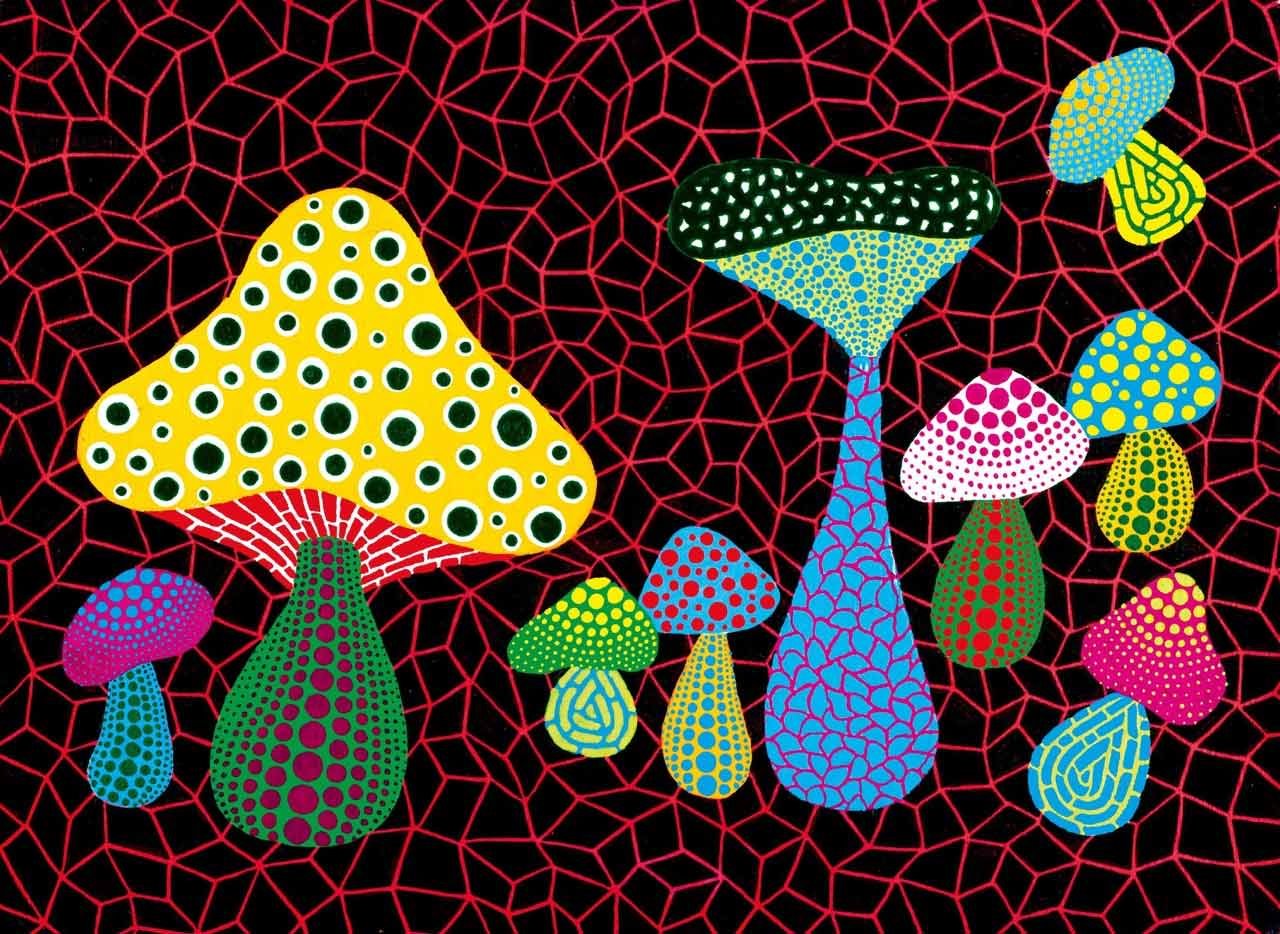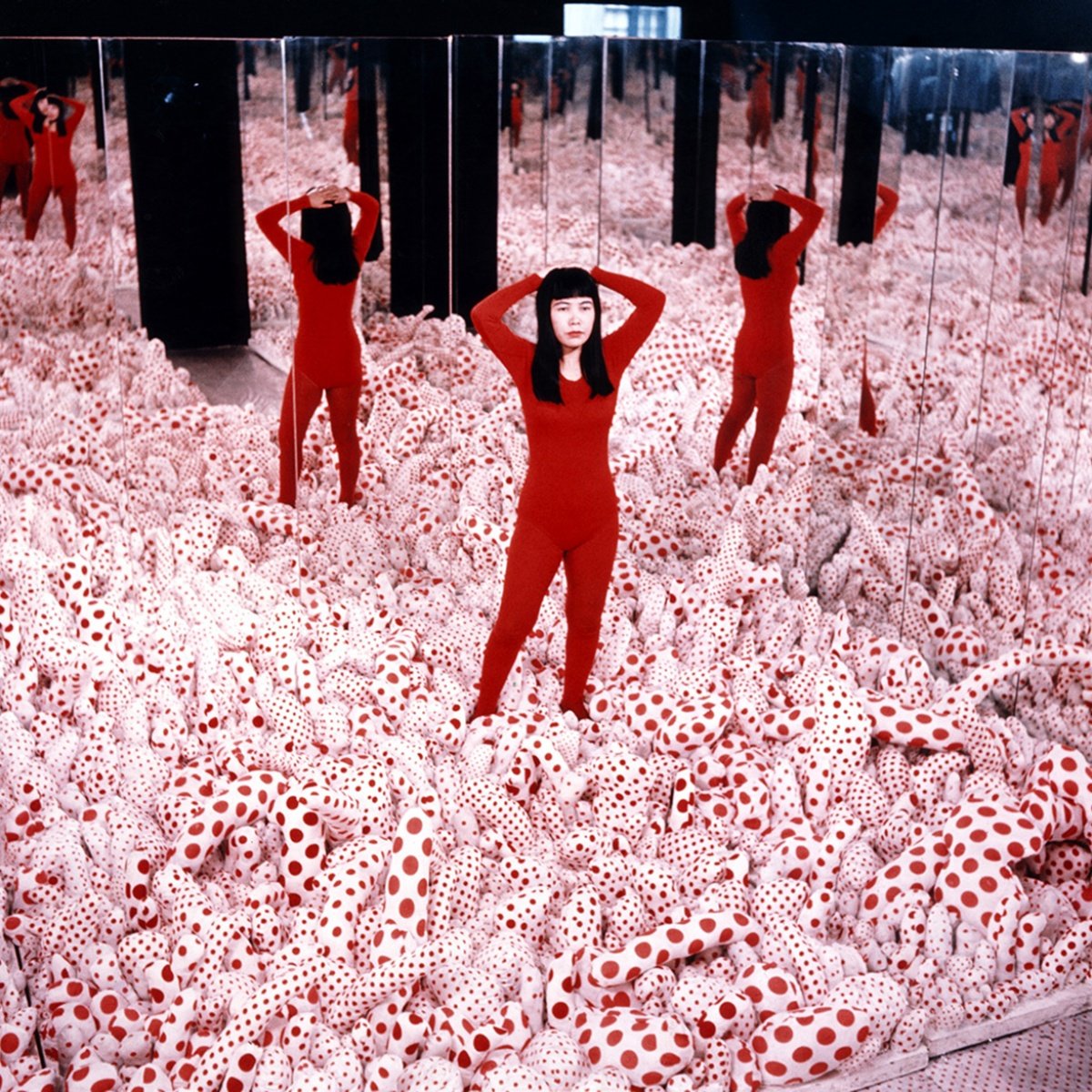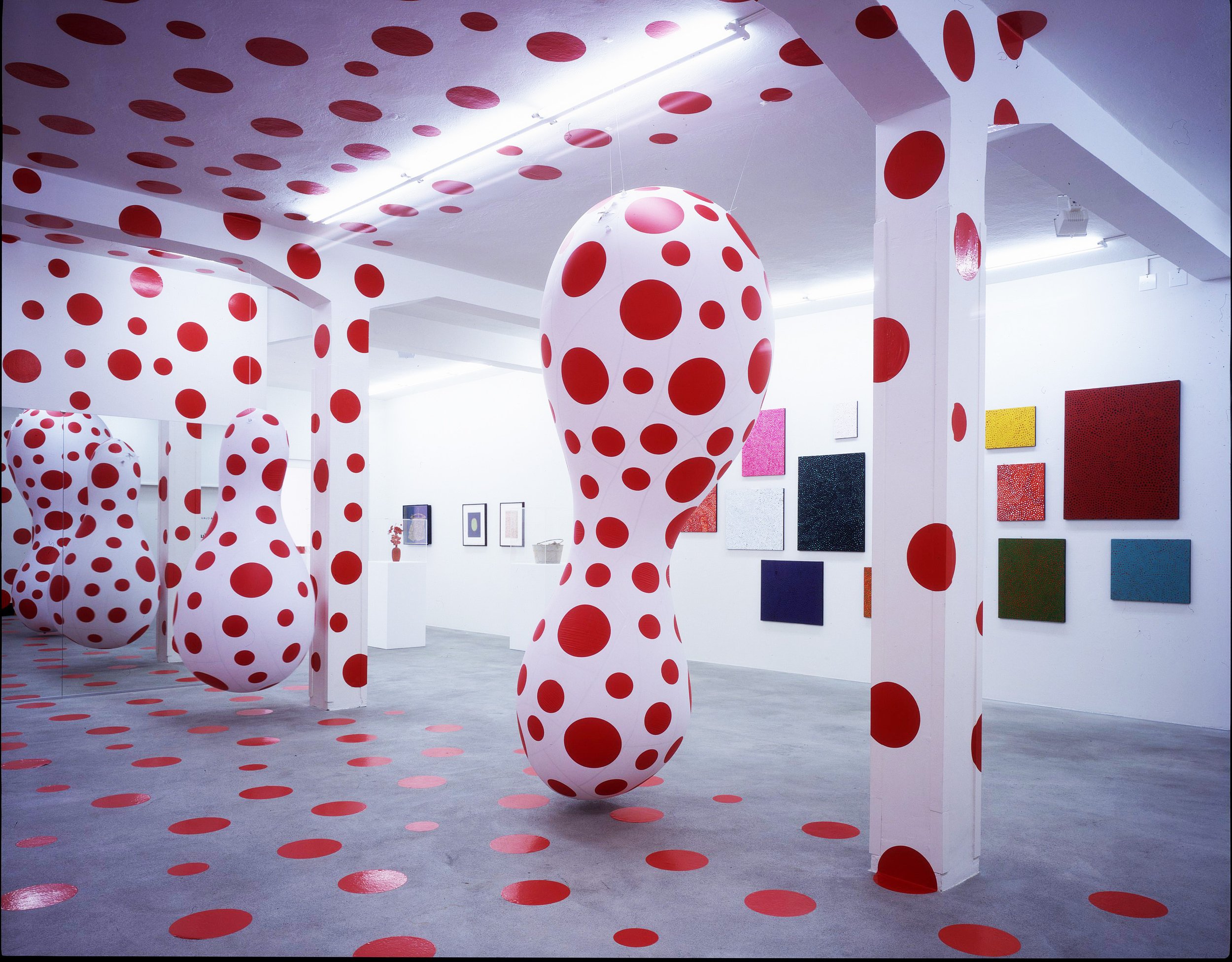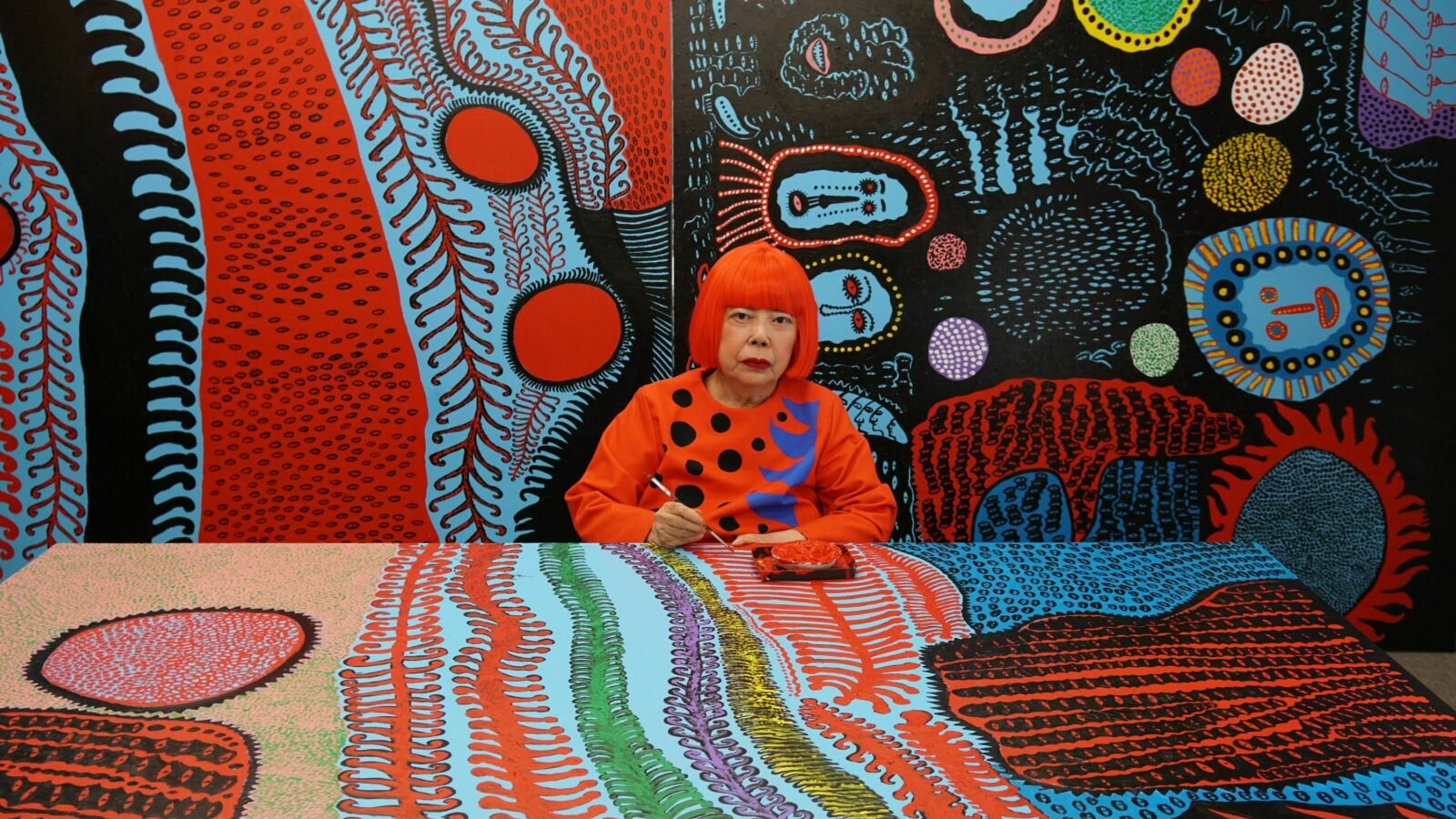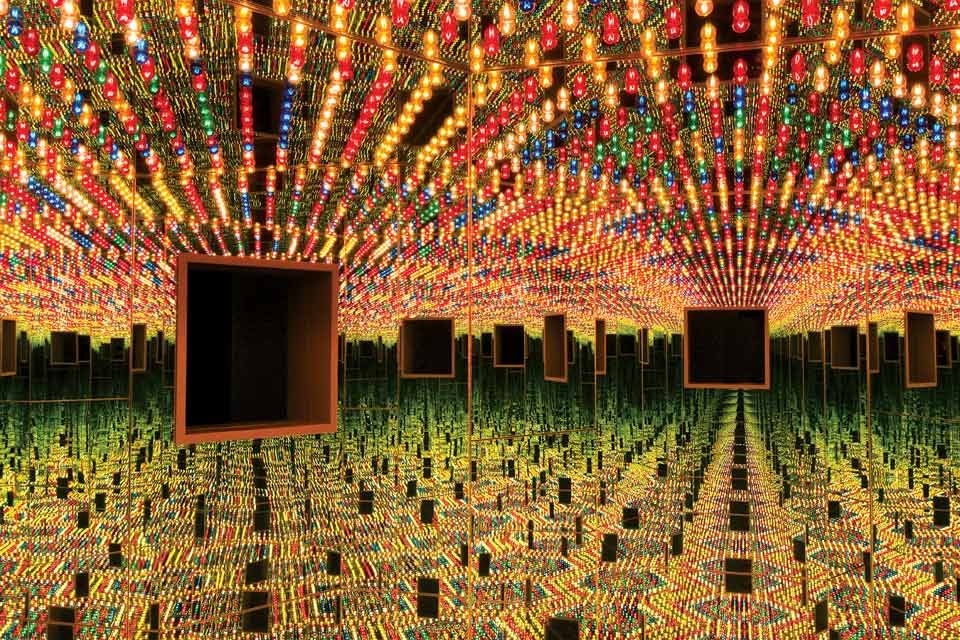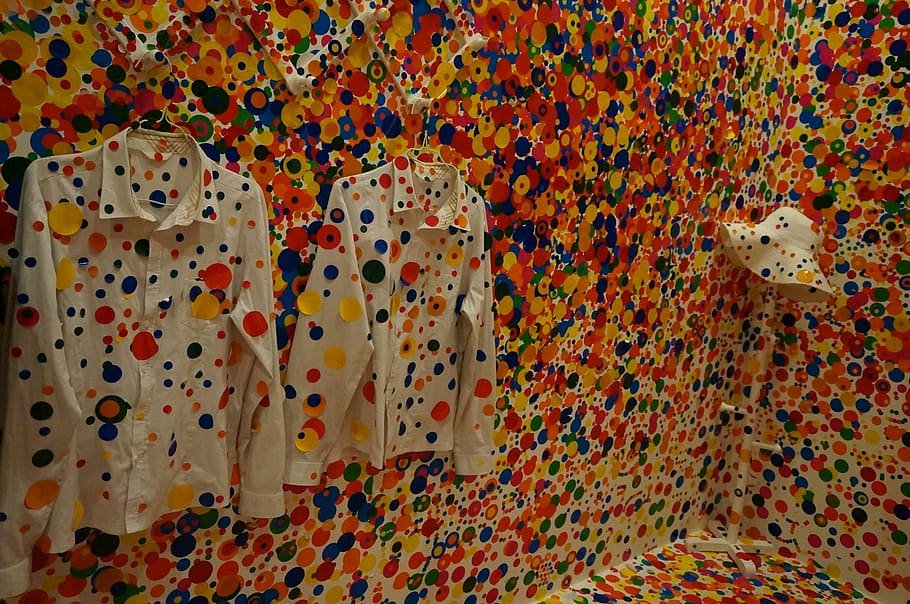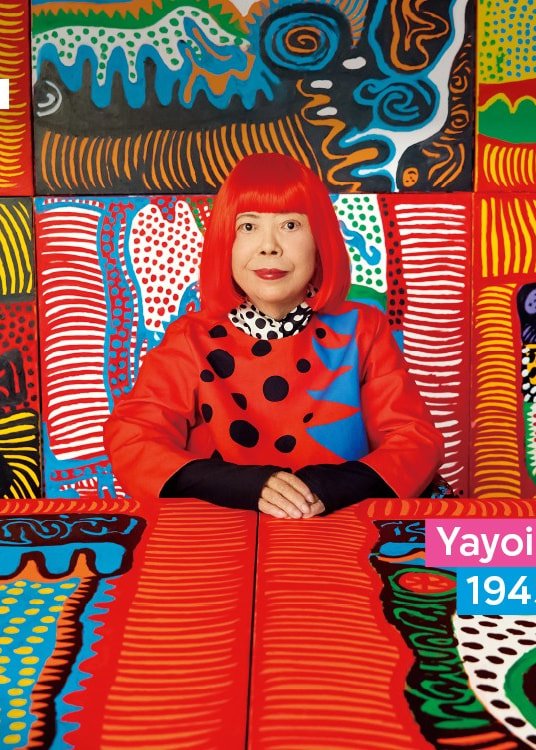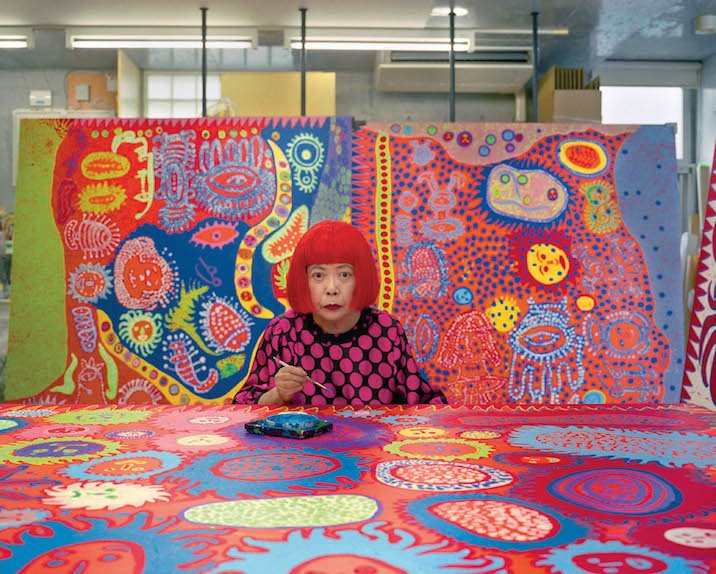Kusama’s Impact on Art
Yayoi Kusama is a contemporary Japanese artist whose work has captivated the art world for more than six decades. Born in 1929 in Matsumoto, Nagano Prefecture, Kusama has created a body of work that is as diverse as it is influential. From her early paintings and sculptures to her immersive installations and performance pieces, Kusama has challenged conventions and pushed boundaries to create a unique artistic vision that has had a profound impact on the art world.
Where Did Kusama Begin?
Kusama began her artistic career in Japan in the 1950s, creating vivid, large-scale paintings that explored themes of infinity and repetition. Her works, which often featured polka dots, nets, and other repetitive patterns, were deeply influenced by her experiences with hallucinations and her obsessive-compulsive tendencies. Kusama saw her art as a way of channeling her inner turmoil and creating a sense of order and control in the world around her.
In the early 1960s, Kusama moved to New York City, where she became a key figure in the avant-garde art scene. She quickly gained a reputation for her immersive installations, which often featured her signature polka dots and mirrored surfaces. Her work was groundbreaking in its use of interactive elements and its exploration of the relationship between the artist and the viewer.
Kusama's work has had a profound impact on the art world in a number of ways. Perhaps most notably, her use of repetition and pattern has inspired generations of artists to experiment with new forms of visual expression. Her immersive installations, which create a sense of disorientation and blur the boundaries between art and reality, have also influenced a wide range of contemporary artists.
Kusama’s Most Famous Work
One of Kusama's most famous works is her Infinity Room series, which features small, mirrored rooms that create an illusion of infinite space. These installations, which Kusama began creating in the 1960s, have become iconic examples of her immersive, interactive style. In recent years, the Infinity Rooms have become hugely popular with museum-goers, and have been the subject of numerous solo exhibitions and retrospectives.
The Impact of Kusama’s Art.
Kusama's work has also had a significant impact on the feminist art movement. Her use of repetitive forms and patterns has been seen as a rejection of the traditional male-dominated art world, and her exploration of themes like obsession and control has been interpreted as a critique of patriarchal power structures. Kusama has never explicitly identified as a feminist, but her work has been celebrated for its subversive and empowering qualities.
Another important aspect of Kusama's impact on the art world is her personal story. Kusama has spoken publicly about her experiences with mental illness and the trauma she suffered as a young woman. Her willingness to share her struggles with the public has made her a powerful symbol of resilience and strength, and has helped to destigmatize mental illness in the art world and beyond.
Kusama's influence is not limited to the art world, either. Her collaborations with fashion designers and brands like Louis Vuitton and Marc Jacobs have made her work accessible to a wider audience, and have helped to position her as a cultural icon. Her polka dot and net patterns have become recognizable symbols of her artistic style, and have been emulated by designers around the world.
In recent years, Kusama's work has only continued to gain in popularity and influence. In 2017, she opened her own museum in Tokyo, the Yayoi Kusama Museum, which showcases her work and provides a permanent home for her installations. The museum has quickly become a major tourist attraction and a must-see destination for art lovers around the world.
Overall, Yayoi Kusama's impact on the art world is difficult to overstate. Her pioneering use of repetition, pattern, and immersive installations have inspired generations of artists and helped to redefine the boundaries of contemporary art. Her personal story, which includes struggles with mental illness and trauma, has made her a symbol of resilience and empowerment, and has helped to destigmatize these issues in the art world and beyond.
Kusama's influence has been recognized by a wide range of institutions and organizations. In 2017, she was named one of Time Magazine's 100 most influential people, and in 2020, she was awarded the Order of Culture, one of Japan's highest honors. Her work has been exhibited in some of the world's most prestigious museums, including the Tate Modern, the Museum of Modern Art, and the Hirshhorn Museum and Sculpture Garden.
Despite her enormous success, Kusama has remained true to her artistic vision, continuing to create bold, innovative works that challenge conventions and inspire viewers. At the age of 93, she remains one of the most influential and visionary artists of our time, and her impact on the art world shows no signs of diminishing.

